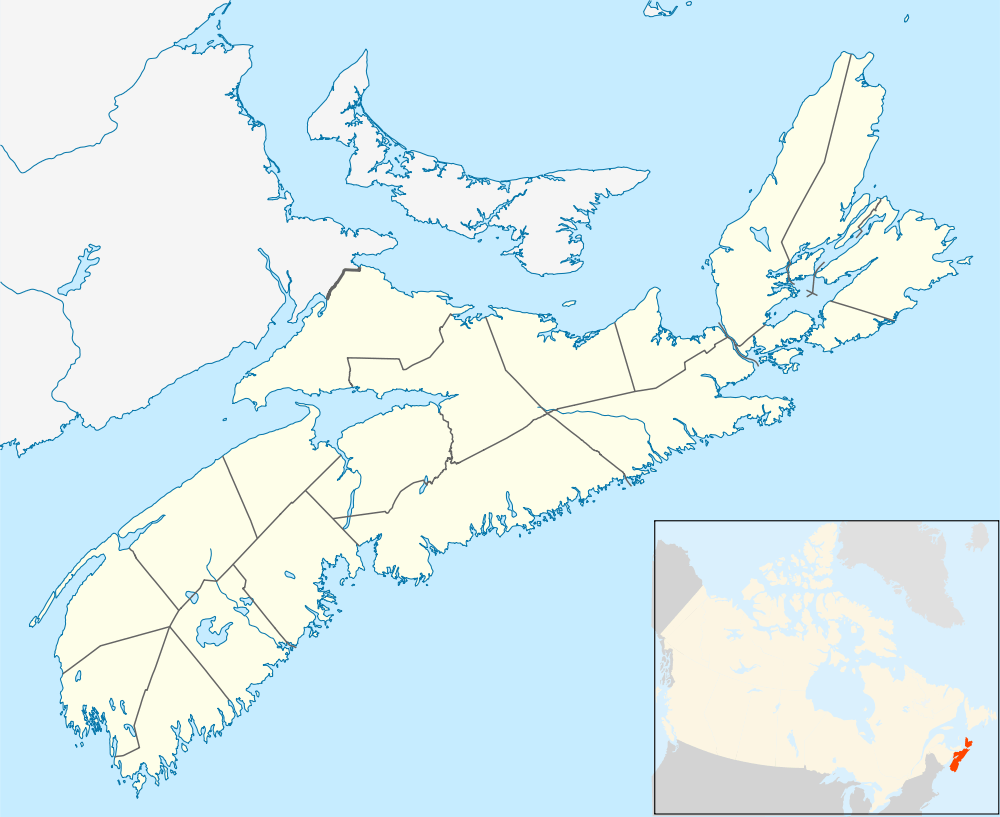Big Tancook Island
 Big Tancook Island Big Tancook Island, Nova Scotia | |
| Geography | |
|---|---|
| Location | Mahone Bay |
| Coordinates | 44°27′25″N 64°09′58″W / 44.457°N 64.166°WCoordinates: 44°27′25″N 64°09′58″W / 44.457°N 64.166°W |
| Administration | |
|
Canada | |
| Province | Nova Scotia |
| County | Lunenburg County |

Big Tancook Island is a Canadian island located off the coast of Nova Scotia. The island is one of the 365 islands dotting Mahone Bay. It measures approximately 4 km (2.5 mi) long (north to south) and 1.6 km (0.99 mi) wide, forming roughly a "C" shape. The island is separated from nearby Little Tancook Island to the east by a 1 km (0.62 mi) wide strait called "The Chops". Big Tancook Island is approximately 4 km (2.5 mi) from Sandy Cove Point on the Aspotogan Peninsula - the nearest point on the mainland.
The island measures 550 acres (2.2 km2) and has a rocky shoreline with open fields and softwood forest dotted by ponds, tidy residential properties and fish stores. It is the largest island in Mahone Bay.
The community of Big Tancook is the only one located on Big Tancook Island. Big Tancook has a population of about 200 people during the summer months and approximately 120 people during the winter months. It is home to one of the last remaining one-room schoolhouses in Canada: Big Tancook Island Elementary School. The residents primarily make their living through lobster fishing, although a unique artistic community adds a certain dynamic vibrancy to the island.
Wildlife populations are limited to deer, muskrats, snakes, and pheasants. There is however, a great variety of birds.
The island was originally a summer fishing ground for native peoples. The word "Tancook" is an anglicized Mi'kmaq term that translates into "facing the open sea." The island was later settled by German immigrants. The industry at that time was mostly agricultural, and primarily consisted of cabbage farming. Tancook was at one time the leading producer of sauerkraut in Canada, which was transported to market in barrels packed in the holds of Tancook schooners. Only after the popularity of the cabbage and sauerkraut industry diminished did the island shift to fishing.
Industry
The majority of residents on Big Tancook Island are employed with the fishing industry (primarily lobster fishing) or the ferry service, although several small professional and artistic businesses operate on and from the island.
Culture
Due to its relative isolation from mainland Nova Scotia, Tancook Island has to some degree retained elements of an earlier cultural era. This is reflected in the island's primary resource-based economy, as well as aspects of the residents' lives today. An example of this includes the continuing existence and use of a one-room schoolhouse, which serves as the elementary school for the island (as well as neighboring Little Tancook Island). The school is one of only two such remaining schoolhouses in Canada. High school students must be transported to the mainland town of Chester to attend school upon reaching grade six.
This is a significant factor in the island becoming a popular tourist destination, and the island provides many services catering to day-travellers. Tourism is quite a significant economic driver in much of Nova Scotia, particularly along the South Shore. Tancook's Tourist numbers have reached up to nearly 2000 over the summers in the past few years. A lot of this could be due to the appeal of geocaching on the island. Tancook Island is home to over 30 geocaches. The creator of these caches, known as 'TancookIslandGirl' to the online community of geocachers, has an event every summer to present new caches that she placed, which brings in many geocachers worldwide and boosts tourism numbers.
Services
A scheduled ferry service operates daily year-round from Chester to Big Tancook Island and Little Tancook Island. The MV William G. Ernst is a passenger-only ferry operated by the provincial Department of Transportation and Infrastructure Renewal that transports passengers from the mainland to the island.
Emergency response is provided by the Big Tancook Island Emergency Response Association (BTIERA), which is supported through volunteer efforts and community fundraising.
See also
- Tancook schooner, used in sauerkraut trade and for yachting